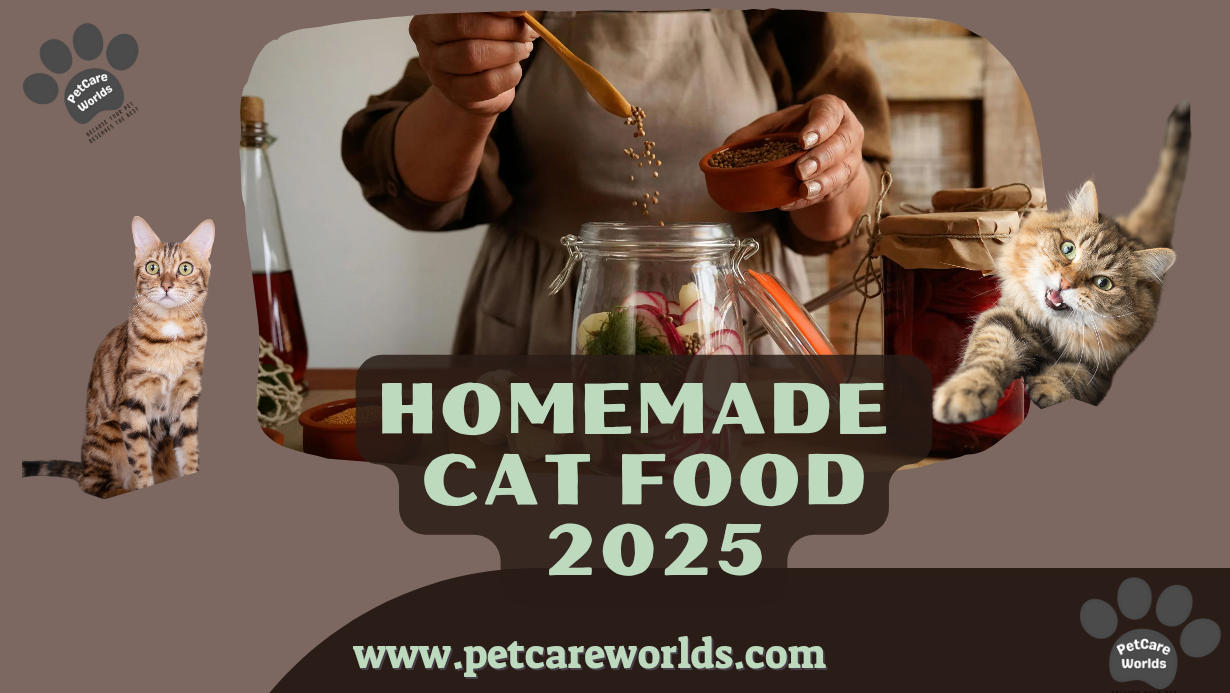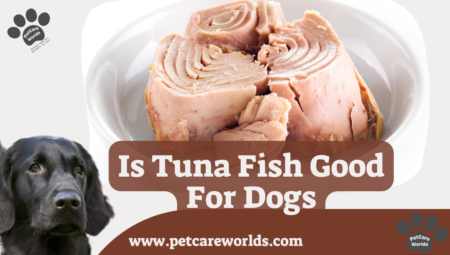Homemade Cat Food – If you’re a cat owner, you know how important it is to feed your feline friend the best nutrition possible. But have you ever thought about making homemade cat food instead of relying on store-bought options? Not only is it an affordable way to give your cat fresh and nutritious meals, but it’s also a great way to ensure they’re eating exactly what they need.
In this article, we’ll explore how easy it is to prepare healthy, tasty homemade cat food with simple ingredients you likely already have in your kitchen. Imagine being able to whip up a batch of wholesome meals for your cat that are not only good for them but also delicious! Ready to dive into the world of homemade cat food and spoil your furry friend with fresh meals that will keep them purring? Let’s get started!
Homemade Cat Food
Feeding your cat homemade food can be a game-changer. Homemade cat food lets you control the ingredients and ensure that your pet is eating only the best. It’s simple, cost-effective, and your cat will love it.
You can create healthy meals with just a few ingredients. Plus, making your own cat food means no harmful additives or preservatives—just fresh, natural goodness. Ready to try it out? Here are some of the benefits of making homemade meals for your cat:
- Full control over nutrition
- Fresh and natural ingredients
- Cheaper than store-bought food
- Avoids harmful chemicals and fillers
Let’s explore some easy recipes you can start making today.
Why Homemade Food is a Great Choice for Your Cat
Homemade food is a fantastic option for your cat. It allows you to know exactly what’s in their food. You can avoid harmful chemicals and feed them meals that are packed with nutrients. When you make your own cat food, you can tailor it to their needs. Whether your cat has food sensitivities or a special dietary requirement, homemade food is a great solution. Plus, your cat will enjoy the freshness and flavor that comes with homemade meals.
Key Ingredients to Use in Homemade Cat Food
To make nutritious cat food, you need the right ingredients. Here are some key components to include:
- High-quality protein (chicken, turkey, beef, or fish)
- Healthy fats (olive oil or fish oil)
- Vegetables (carrots, peas, zucchini)
- Rice or oats for fiber
- Bone broth for extra nutrients
Make sure to avoid harmful ingredients like garlic, onions, and certain spices. These can be dangerous for your cat.
Basic Guidelines for Preparing Homemade Cat Food
Preparing homemade cat food is easier than you think. Just follow these basic steps to get started:
- Choose high-quality meat for protein.
- Cook ingredients thoroughly to avoid any raw food risks.
- Grind or mash the food to make it easy for your cat to eat.
- Add healthy fats to help with digestion and coat health.
- Store leftovers properly to keep the food fresh for your cat.
The key is to use natural ingredients and make sure the food is easy for your cat to consume.
How to Make Liver-Based Homemade Cat Food
Liver is a great source of nutrients for your cat. Here’s how to make liver-based homemade cat food:
Ingredients:
- 250-500 grams of chicken liver
- 1 medium-sized potato
- 1 zucchini
- 1-2 carrots
- 1 small handful of rice
- 1 tablespoon of olive oil
Instructions:
- Cook the liver and vegetables until soft.
- Boil rice separately.
- Mash everything together until smooth.
- Add olive oil to the mixture for added fats.
- Serve fresh or store in the fridge for up to a few days.
This recipe is packed with essential vitamins and is easy for your cat to digest.
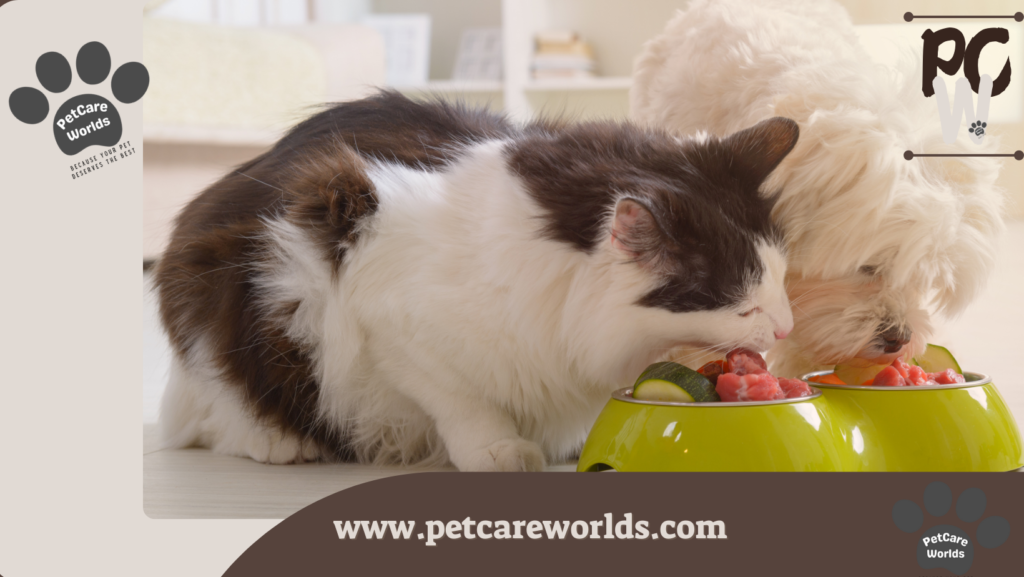
How to Make Liver-Based Homemade Cat Food
Liver is an excellent source of vitamins and minerals for your cat. Making a liver-based homemade cat food is simple and can be a nutritious meal for your feline friend. Here’s how to prepare it easily at home.
Ingredients for Liver Cat Food Recipe
To make this recipe, you’ll need a few key ingredients:
- 250-500 grams of chicken liver
- 1 medium-sized potato
- 1 zucchini
- 1-2 carrots
- 1 small handful of rice
- 1 tablespoon of olive oil
These ingredients are simple but packed with the nutrients your cat needs.
Steps to Prepare Liver-Based Cat Food
Now, let’s break down the steps to prepare liver-based cat food. Follow these easy instructions:
Step 1: Prepare Ingredients
- Wash the vegetables (potato, zucchini, carrots).
- Peel and chop them into small pieces.
- Rinse the rice thoroughly to remove any dust or excess starch.
- Cut the liver into small, bite-sized pieces.
This is the first step in ensuring everything is ready to cook.
Step 2: Cook and Mash the Ingredients
- Cook the liver by boiling it until it’s fully cooked.
- Boil the vegetables (potato, zucchini, and carrots) in separate pots.
- Cook the rice in a pot of water, then drain.
- Once everything is cooked, mash the ingredients together until smooth.
- Add olive oil to the mash to enhance flavor and nutritional value.
Ensure that the mixture is smooth and easy for your cat to eat.
Step 3: Serve and Store
- Let the food cool to a comfortable temperature before serving it to your cat.
- Serve it fresh in your cat’s dish.
- Store leftovers in an airtight container or wrap it up in plastic wrap and refrigerate. The food can last up to a few days.
That’s it! You’ve made a healthy, liver-based meal for your cat that’s both nutritious and delicious.
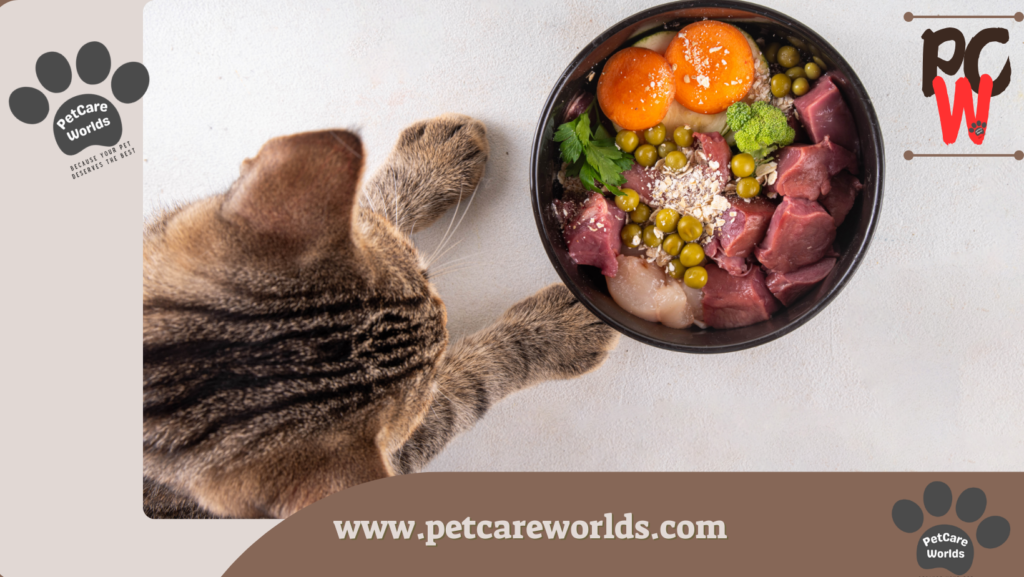
Important Considerations When Making Homemade Cat Food
When preparing homemade cat food, there are a few important things to keep in mind. It’s essential to ensure your cat gets the right balance of nutrients. Protein is key, but so are healthy fats and vitamins. Making sure you avoid certain ingredients is also crucial. Always aim for fresh ingredients, and never compromise on food quality.
Here are a few things to consider:
- Use high-quality protein sources
- Make sure the food is well-balanced
- Avoid harmful additives or preservatives
- Be aware of your cat’s specific dietary needs
With these considerations, you can ensure your cat gets the best nutrition from their homemade meals.
Ingredients to Avoid in Homemade Cat Food
Certain foods can be harmful to your cat, and it’s important to avoid them when preparing homemade meals. Here’s a list of ingredients that should never be included:
- Garlic and onions
- Tomatoes (especially raw)
- Chocolate
- Grapes and raisins
- Uncooked eggs
- Mushrooms
These ingredients can cause serious health issues for your cat. Always double-check the ingredients before cooking.
Tips for Safely Preparing Homemade Cat Food
To ensure that your homemade cat food is both nutritious and safe, follow these tips:
- Clean and prepare all ingredients properly.
- Cook the food thoroughly to avoid any bacterial contamination.
- Store leftovers in the fridge and use them within a few days.
- Avoid cross-contamination by keeping raw ingredients separate from cooked food.
- Make sure the food is easy to digest, especially for kittens and elderly cats.
By following these safety tips, you’ll create meals that are not only healthy but also safe for your furry friend.
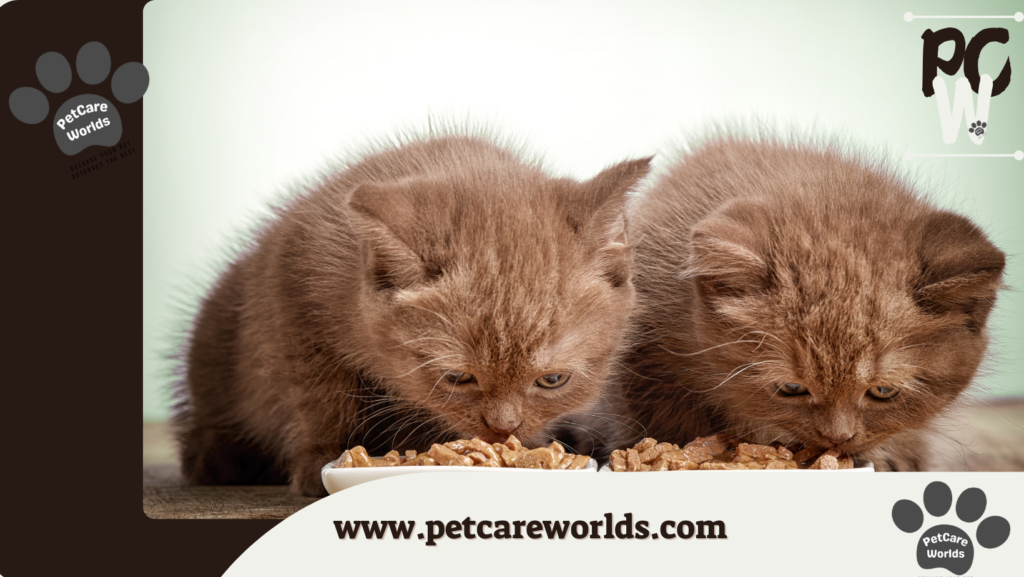
Homemade Cat Food Table
Here’s a simple table summarizing the key recipes and ingredients for making homemade cat food:
| Recipe Name | Main Ingredients | Cooking Time | Storage Instructions |
|---|---|---|---|
| Liver-Based Cat Food | Chicken liver, potato, zucchini, carrots, rice, olive oil | 30-40 minutes | Store in an airtight container in the fridge for up to 3 days |
| Beef and Broccoli Cat Food | Ground beef, broccoli, olive oil | 30-40 minutes | Refrigerate for up to 3 days |
| Vegetable and Bone Broth Cat Food | Chicken bones, carrots, zucchini, green beans, rice | 1 hour | Can be stored for up to 3 days in the fridge |
| Fish and Broccoli Cat Food | Fish (such as trout or mackerel), broccoli, olive oil | 20-30 minutes | Store leftovers in the fridge for up to 2 days |
This table helps you easily compare the different recipes and gives you clear instructions on storage and preparation times.
Homemade Cat Food FAQ (Frequently Asked Questions)
Here are some common questions and answers about homemade cat food:
1. Is homemade cat food safe for my cat?
Yes, homemade cat food can be safe if prepared correctly. Always use fresh, high-quality ingredients and follow recipes designed for feline nutrition. Avoid harmful ingredients like garlic, onions, and chocolate.
2. Can I feed my cat only homemade food?
Homemade food can be a great addition to your cat’s diet, but it should be well-balanced. Cats require specific nutrients, such as taurine, which may not be found in every homemade recipe. Consult your vet to ensure the food meets your cat’s dietary needs.
3. How often should I serve homemade cat food?
You can serve homemade cat food regularly, but it’s best to mix it with commercial cat food to ensure your cat is getting a complete diet. Aim for a balanced meal plan based on your cat’s specific health requirements.
4. Can I freeze homemade cat food?
Yes, homemade cat food can be frozen for long-term storage. Make sure to divide it into portions and store it in airtight containers or freezer-safe bags. Thaw the food in the refrigerator before serving.
5. What are some signs that my cat doesn’t like homemade food?
If your cat refuses to eat the homemade food, it could be a sign that the texture or flavor isn’t to their liking. You can try adjusting the ingredients or adding some cat-friendly seasonings to entice them.
6. How do I know if the homemade food is nutritionally complete?
Cats have specific dietary needs that require a balance of protein, fats, vitamins, and minerals. To ensure homemade food is nutritionally complete, consult a vet or pet nutritionist who can guide you on proper ingredient ratios and supplementation.
7. Can I add supplements to homemade cat food?
Yes, certain supplements like taurine, omega-3 fatty acids, and vitamin E may be necessary in homemade cat food. However, always check with your vet to ensure you’re adding the correct amounts and types of supplements.
8. What ingredients should I avoid when making homemade cat food?
Avoid ingredients such as garlic, onions, raisins, grapes, chocolate, and uncooked eggs. These foods can be toxic to cats and should never be included in their meals. Always check ingredients before preparing food.
Conclusion
Homemade cat food can be a healthy and affordable option for your cat’s diet. By using the right ingredients and following safe preparation methods, you can ensure your cat enjoys nutritious meals every day.


